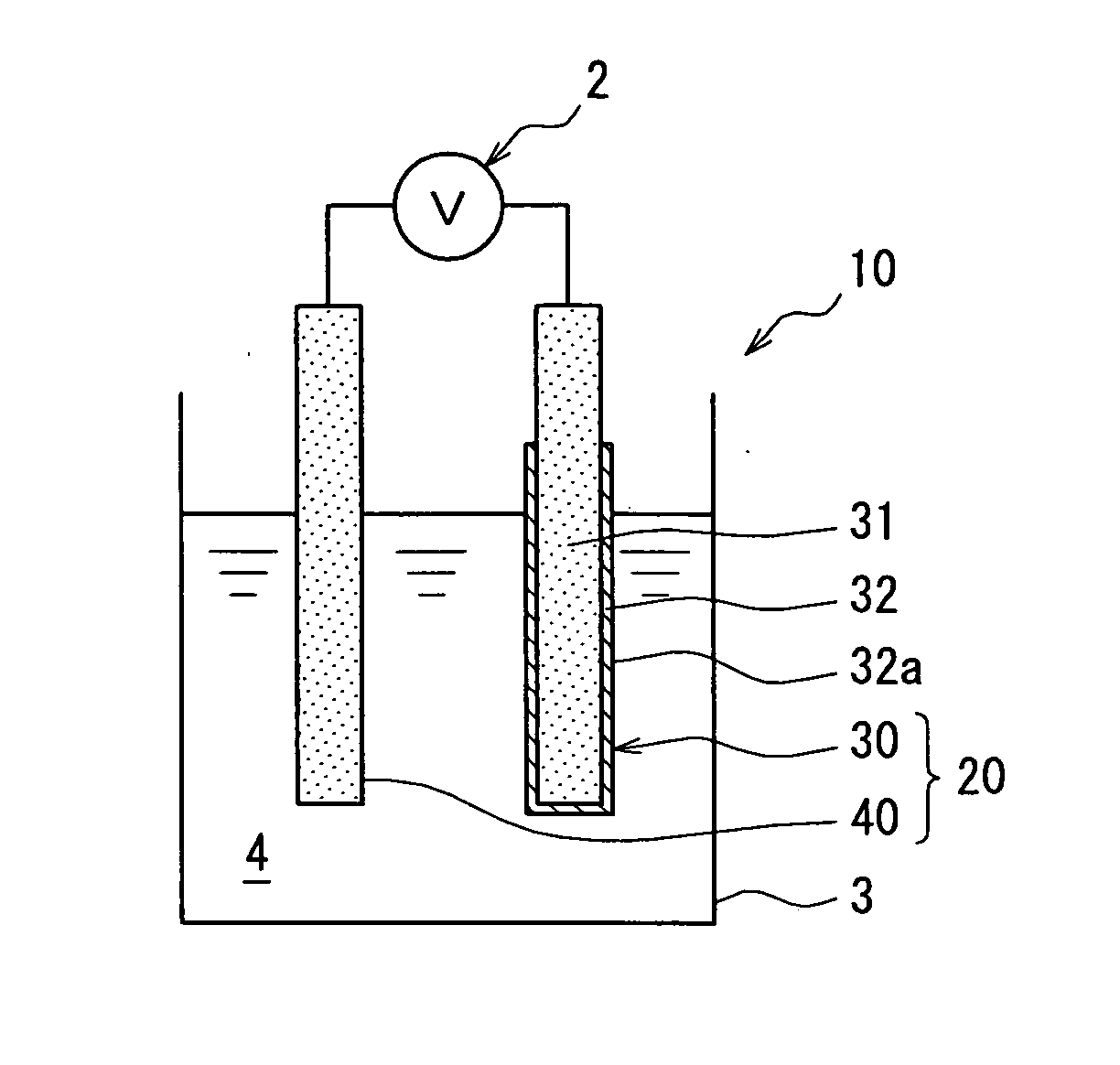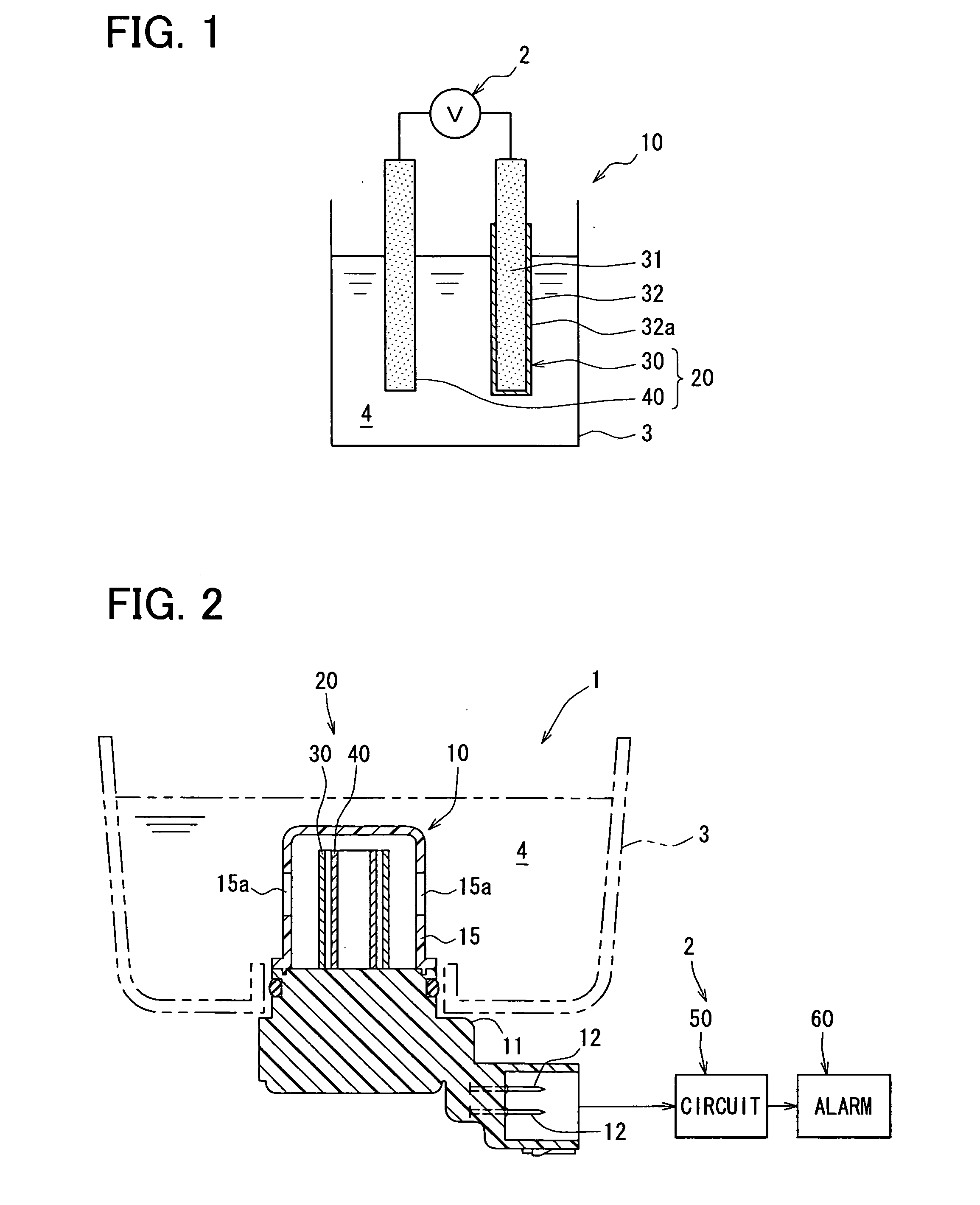Reference electrode and detector using the same for detecting acidity or basicity of oil
a technology reference electrode, which is applied in the direction of instruments, material electrochemical variables, measurement devices, etc., to achieve accurate detection of acidity or basicity of oil, high heat resistance, and hardly soluble in water
- Summary
- Abstract
- Description
- Claims
- Application Information
AI Technical Summary
Benefits of technology
Problems solved by technology
Method used
Image
Examples
first embodiment
(First Embodiment)
[0036] The first embodiment will be described with reference to FIGS. 1-6. FIG. 1 is a schematic diagram showing a structure of a pair of electrodes using a reference electrode for detecting acidity or basicity of oil according to the first embodiment, and FIG. 2 is a partial sectional view showing a structure of an oil deterioration detecting device 1 to which the reference electrode for detecting acidity or basicity of oil of the first embodiment is applied.
[0037] Referring to FIG. 2, an oil deterioration detecting device 1 is attached to, for example, an oil pan 3 of a vehicle, and detects a deterioration degree of oil 4 to be used for at least one of hydraulic control and lubrication. The oil deterioration detection device 1 includes an oil deterioration detector (hereinafter referred to as an oil deterioration sensor) 10, and a determination circuit 50 serving as control means for receiving an oil deterioration signal input from the oil deterioration sensor 1...
second embodiment
(Second Embodiment)
[0079] The second embodiment will be described in detail with reference to FIGS. 7-9. In this embodiment, the same reference numbers will be given throughout the drawings to refer to the same or like parts as those in the first embodiment, and thus the description thereof will be omitted hereinafter.
[0080] In the first embodiment described above, in order to keep the output potential of the reference electrode substantially constant with reference to the pH change according to the acidity or basicity of the oil 4, the combination of zinc [Zn] and zinc phosphate [Zn3(PO4)2] is used as the combination of the metal 31 and the hardly soluble salt 32 of the reference electrode 30, respectively.
[0081] In contrast, in the second embodiment shown in FIG. 7, the combination of silver [Ag] and silver chloride [AgCl] is used as the combination of a metal 231 and a hardly soluble salt 232 of a reference electrode 230, respectively.
[0082]FIG. 7 schematically shows a section...
PUM
| Property | Measurement | Unit |
|---|---|---|
| temperature | aaaaa | aaaaa |
| temperatures | aaaaa | aaaaa |
| temperature | aaaaa | aaaaa |
Abstract
Description
Claims
Application Information
 Login to View More
Login to View More - R&D
- Intellectual Property
- Life Sciences
- Materials
- Tech Scout
- Unparalleled Data Quality
- Higher Quality Content
- 60% Fewer Hallucinations
Browse by: Latest US Patents, China's latest patents, Technical Efficacy Thesaurus, Application Domain, Technology Topic, Popular Technical Reports.
© 2025 PatSnap. All rights reserved.Legal|Privacy policy|Modern Slavery Act Transparency Statement|Sitemap|About US| Contact US: help@patsnap.com



